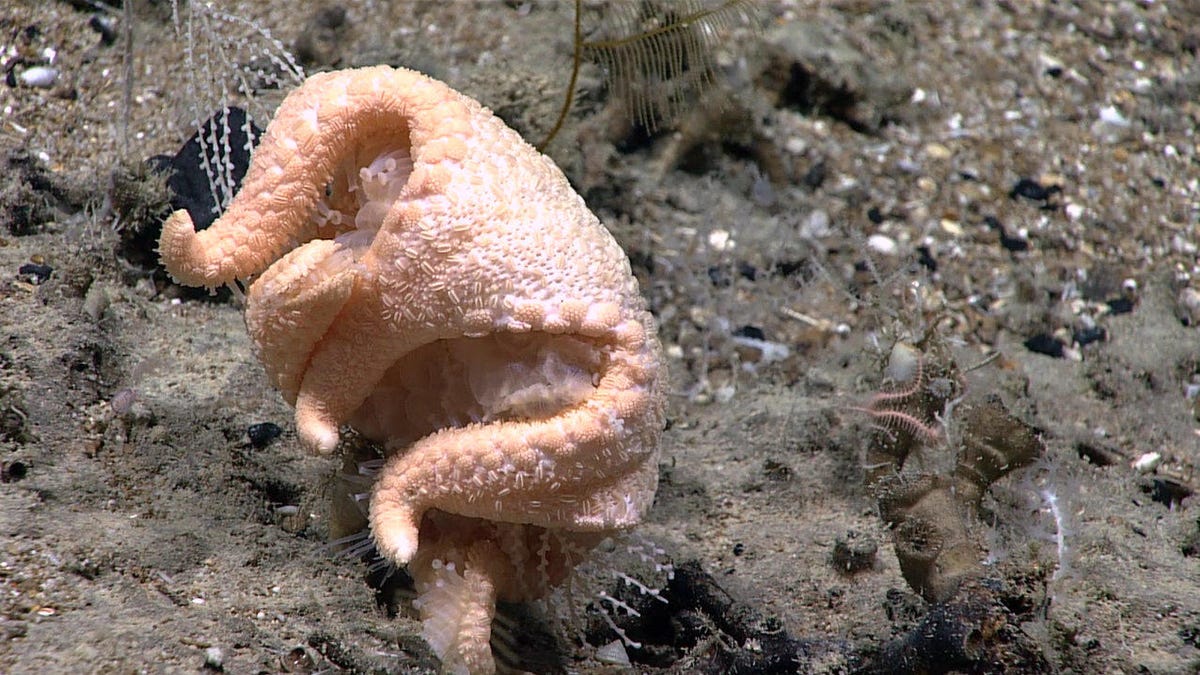Scientists thrilled to see rare starfish spotted alive, chowing on coral
The elusive sthenaster emmae sea star makes an appearance during a NOAA ocean exploration mission.
Sthenaster emmae is a bit of an oddball. The starfish species was first described in 2010 based on three museum specimens, two dried and one preserved in ethanol. It's one thing to look at a dead sea star, and another to finally behold it alive and snacking in its natural habitat.
The science team on the National Oceanic and Atmospheric Administration ship Okeanos Explorer got a thrill when they spotted sthenaster emmae in the Atlantic Ocean.
"This was the FIRST time it's been seen alive!" enthused Smithsonian starfish expert Chris Mah in a NOAA blog post on Thursday.
Plinthaster dentatus, a ravioli star.
The video footage will help biologists learn more about the sea star.
"This species was hypothesized to be a coral predator when I described it, based on fragments found in its gut, but now we have solid evidence of this species feeding on a primnoid octocora," said Mah. This pretty much confirms the star's soft-coral-munching predilections.
The NOAA Windows to the Deep mission is focused on documenting largely unexplored deepwater areas off the southeastern US coast.
Sthenaster emmae wasn't the only fascinating starfish found by the mission's remote cameras. The team also documented a sea star nicknamed the "cookie" or "ravioli" star thanks to its resemblance to stuffed pasta.
Windows to the Deep is scheduled to continue through July 12. It has truly been a star-studded mission so far.


